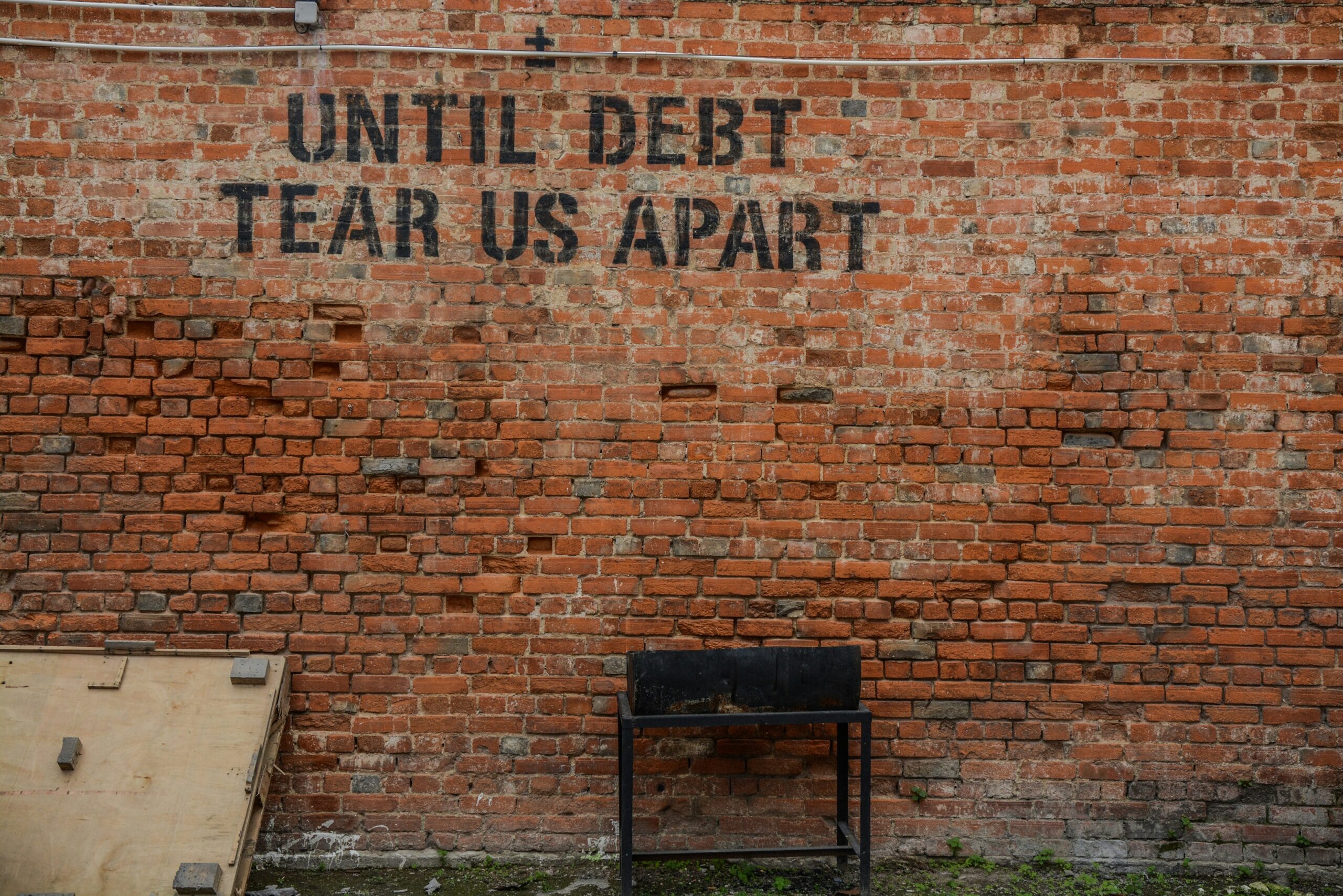How to Create an Emergency Fund: A Comprehensive Guide

Introduction to Emergency Funds
An emergency fund is a crucial element in achieving financial stability and peace of mind. It is a dedicated savings account that individuals use to cover unforeseen expenses, such as medical emergencies, car repairs, or sudden job loss. These unexpected events can disrupt one’s financial well-being, making it imperative to have a financial cushion to rely on. The primary purpose of an emergency fund is to provide a safety net that alleviates the stress of sudden financial burdens, allowing individuals to navigate life’s uncertainties with more confidence.
Many people tend to underestimate the significance of having an emergency fund, often believing they can manage any unexpected expenses from their regular income or credit options. However, this approach can lead to financial strain in times of crisis. For instance, relying solely on credit cards may incur high-interest debts that exacerbate the financial situation, while using savings for other purposes can leave one vulnerable to unforeseen expenses. Therefore, understanding how to create an emergency fund is crucial for anyone looking to enhance their financial security.
Moreover, establishing an emergency fund can instill a sense of discipline and saving habits that contribute to overall financial wellness. By setting aside a small portion of monthly income into this fund, individuals build a reserve that can be accessed when necessary, ultimately reinforcing the concept of living within one’s means. It is recommended that individuals aim to save at least three to six months’ worth of living expenses to ensure sufficient coverage. In doing so, one prepares not only for the unpredictability of life but also lays the groundwork for a more confident financial future. Engaging in the process of creating and maintaining an emergency fund is a proactive step towards responsible personal finance.
Determining the Right Amount for Your Emergency Fund
Creating an emergency fund is a crucial financial strategy designed to provide a financial safety net during unexpected setbacks. The first step in how to create an emergency fund involves determining the appropriate amount to save, which can differ significantly based on several personal factors. A commonly suggested guideline is to aim for an emergency fund that covers three to six months’ worth of living expenses. However, this estimate can be adjusted based on individual circumstances.
One fundamental factor to consider when calculating your emergency fund is your monthly expenses. Begin by compiling a detailed list of your fixed and variable expenses, which may include rent, utilities, groceries, insurance premiums, and minimum debt payments. Understanding your monthly cash flow will provide insight into your financial needs during a crisis. Additionally, you should account for potential fluctuations in expenses, such as healthcare or transportation costs, especially if you anticipate changes in your job situation or personal life.
Another element to take into account is income stability. Individuals with steady jobs and predictable incomes may require a smaller emergency fund than freelancers or self-employed individuals who experience irregular earnings. For freelancers, a larger fund may be prudent to accommodate potential periods without income. Similarly, those in high-risk professions or industries subject to economic volatility may also consider saving more than the typical range to enhance financial security.
Personal risk tolerance can further influence the amount set aside for emergency funds. Those with lower risk tolerance may find peace of mind in having a more substantial fund, while others may consider a smaller buffer sufficient. Ultimately, assessing your unique financial situation will be integral in determining how to create an emergency fund that effectively meets your needs.
Where to Keep Your Emergency Fund
When considering how to create an emergency fund, the choice of where to keep your funds is crucial. The primary objective of an emergency fund is to ensure that the money is both readily accessible and secure. Therefore, exploring different financial instruments that offer liquidity while minimizing risks is essential.
One popular option for storing your emergency fund is a high-yield savings account. These accounts typically offer interest rates that are significantly higher than traditional savings accounts, which allows your emergency funds to grow over time while still remaining easily accessible. High-yield savings accounts generally allow you to withdraw funds even on short notice, making them an excellent choice for immediate liquidity needs.
Another viable option is a money market account. This type of account not only offers competitive interest rates but also usually provides check-writing capabilities and debit card access, enhancing the ability to access funds quickly when needed. Money market accounts often come with some restrictions, such as a minimum balance requirement or limited transactions per month, but they provide a blend of convenience and security for your emergency savings.
In addition to these options, you might also consider keeping a portion of your emergency fund in a liquid investment vehicle, such as a short-term bond fund. While these may carry slightly more risk than a traditional savings account, they can still offer better interest rates than ordinary savings vehicles. However, it is essential to assess your risk tolerance and the importance of having quick access to cash before choosing this route.
Ultimately, when deciding how to create an emergency fund, prioritizing safety and accessibility over potential high returns is pivotal. Establishing a well-structured approach to where you keep your emergency fund will not only provide peace of mind but also ensure that you are financially prepared for unforeseen circumstances.
Setting Up Your Emergency Fund: A Step-by-Step Plan
Establishing an emergency fund is a crucial financial strategy that enables individuals to navigate unexpected expenses with ease. To effectively create this fund, it is essential to follow a structured approach that ensures progress and sustainability. The first step in this process is to create a detailed budget that allocates a portion of your income specifically for contributions to the emergency fund. Analyze your current financial situation, tracking your income and expenses to identify areas where you can adjust spending. By budgeting smartly, you can earmark a regular amount to set aside.
Next, consider setting specific savings goals to give your emergency fund a clear target. A typical recommendation is to save between three to six months’ worth of living expenses. This goal provides a substantial safety net, particularly in times of financial crisis. Once your target is established, it is wise to develop a timeline for reaching it. Breaking down your goal into smaller, manageable milestones can enhance motivation and make the process feel less overwhelming.
Automation can significantly aid in the efficiency of building your emergency fund. Set up automatic transfers from your primary bank account to a dedicated savings account. This method ensures consistency in your contributions without requiring deliberate effort each month. Furthermore, seeking ways to cut unnecessary expenses can free up additional funds for saving. Evaluate discretionary spending on dining, entertainment, and subscriptions closely. Each reduction you make in these areas can contribute meaningfully to your emergency fund.
Incorporating these practical steps into your financial routine not only prepares you for unexpected challenges but also instills good saving habits that can benefit you in the long run. By understanding how to create an emergency fund and committing to a disciplined approach, achieving your financial security is well within reach.
How to Grow Your Emergency Fund Effectively
Growing an emergency fund is crucial for ensuring that you have adequate financial security in unforeseen circumstances. While regular contributions form the foundation of your savings, there are several strategies you can adopt to foster growth beyond the status quo. One key approach is to increase your contributions whenever possible, particularly during moments like receiving a bonus, a tax refund, or a raise. Redirecting these extra funds into your emergency reserve can significantly expedite your savings progress, allowing you to reach your financial goals sooner.
Moreover, if you receive occasional windfalls such as inheritance or gifts, consider allocating a portion or all of this unexpected income to your emergency fund. Such additions can dramatically elevate your savings balance, providing a stronger buffer against financial emergencies. Additionally, understanding the power of compounding interest is vital. Selecting a high-yield savings account or a money market account can help your emergency fund grow more effectively. The interest earned on your deposits can contribute to the growth of the fund, which reinforces the necessity of keeping your emergency savings in an account that offers the best returns.
Another important aspect to consider is periodically reviewing your savings plan. Life circumstances and expenses can change, so it is beneficial to assess your budget, financial goals, and savings strategy regularly. Are there any areas where you can cut back on spending to increase your contribution? Have your emergency fund needs changed, perhaps due to a new job or family situation? Regular assessments allow for timely adjustments, ensuring that the emergency fund remains robust and effectively serves its purpose. By integrating these strategies into your financial planning, you can create an emergency fund that not only meets your current needs but also grows to adapt to future changes.
Common Challenges in Building an Emergency Fund
Establishing an emergency fund is a crucial financial step, yet individuals often encounter several challenges during this process. One significant hurdle is the psychological barrier that individuals face. Many people struggle with the idea of saving money, perceiving it as a limitation on their current spending abilities. This mindset can lead to procrastination in starting the fund or insufficient contributions. To combat this, it is beneficial to reframe saving as a form of financial empowerment rather than a restriction. Acknowledging the need for financial security can motivate individuals to prioritize emergency savings.
Another common obstacle involves unexpected expenses. Life is unpredictable, and individuals may encounter sudden medical bills, car repairs, or home maintenance needs that strain their finances. These unforeseen costs can derail the progress made towards building an emergency fund. To mitigate this risk, it is advisable to adopt a flexible budgeting strategy. Allocating a small portion of the monthly budget specifically for unexpected expenses can help maintain momentum in funding an emergency reserve.
Lifestyle inflation also poses a significant challenge in the journey of how to create an emergency fund. As income increases, individuals may feel inclined to upgrade their living standards, which can lead to a decrease in saving rates. It is essential to recognize that while lifestyle upgrades can enhance quality of life, they should not come at the expense of financial security. Staying mindful of one’s spending habits and consciously determining needs versus wants can help maintain a focus on emergency savings.
To stay motivated amidst these challenges, individuals should set specific, achievable goals, and celebrate small milestones. Seeking support from family, friends, or financial advisors can also provide encouragement and accountability. By anticipating challenges and developing strategies to overcome them, one can successfully build an emergency fund, ensuring financial stability in times of need.
When to Use Your Emergency Fund
Establishing an emergency fund is a critical aspect of financial planning, but knowing when to utilize those resources can significantly affect one’s financial stability. An emergency fund should primarily serve as a financial safety net for unforeseen situations that may disrupt an individual’s financial situation. Genuine emergencies typically encompass scenarios such as medical expenses due to unforeseen illness or injury, significant car repairs after an accident, loss of income due to job loss, or urgent home repairs that threaten the safety or integrity of the household. These situations require immediate attention and financial resources to navigate effectively.
On the other hand, non-emergency situations, which often tempt individuals to access their emergency funds, should be approached with caution. Examples include funding discretionary expenses like vacations, purchasing new electronics, or paying for recurring expenses that could be anticipated, such as seasonal bills. Such decisions can undermine the purpose of an emergency fund, which is to act as a safeguard against unexpected financial shocks.
To help delineate genuine emergencies from non-emergency circumstances, it is advisable to establish clear criteria for accessing the fund. Ask yourself whether the situation is urgent, unplanned, and represents a necessity rather than a desire. Additionally, before approaching the emergency fund, exhausting other financial options or resources can further assist in maintaining the fund’s integrity.
After withdrawing from your emergency fund, it is equally crucial to develop a strategy for replenishing the account. This could involve adjusting your monthly budget to prioritize contributions back to the fund over a specified period. Ensuring that your emergency fund is back to its optimal level will provide lasting financial security and peace of mind, thus enabling individuals to manage potential future emergencies efficiently.
Reevaluating Your Emergency Fund Needs
Establishing an emergency fund is a crucial financial strategy; however, it is essential to periodically reassess the requirements of this fund to ensure it remains adequate. Life is inherently dynamic, and as circumstances change, so too do financial needs. Major life events such as changing jobs, relocating, or expanding your family can significantly influence how much you should have set aside in your emergency fund.
For instance, when you start a new job, your financial situation may change. You might have a higher salary, but you could also face different benefits, such as health insurance changes or commuting costs. It is crucial to analyze how these factors impact your budget and whether they necessitate an adjustment to your emergency savings target. Similarly, moving to a city with a higher cost of living can mean that your current fund may no longer suffice to cover essential expenses during periods of unemployment or unforeseen financial setbacks.
In the case of having a baby, your expenses could increase significantly. Childcare costs, medical bills, and other associated expenses should prompt a reevaluation of how to create an emergency fund that accommodates these new financial burdens. It is advisable to review your emergency fund needs at least once a year, but triggers such as job changes, relocations, or major life milestones should also prompt immediate reassessment.
By taking the time to evaluate your current financial landscape and adjusting your emergency fund accordingly, you can ensure that you are adequately prepared for unexpected challenges. This ongoing process is essential for maintaining financial security and peace of mind, allowing you to face life’s uncertainties with confidence.
Conclusion: The Peace of Mind that Comes with Financial Preparedness
Establishing an emergency fund is a crucial component of a sound financial strategy. Throughout this guide, we have examined the steps necessary for building an effective safety net to help individuals navigate unexpected expenses with greater ease. By understanding how to create an emergency fund, readers can significantly enhance their financial stability during challenging times.
The importance of having an emergency fund cannot be overstated. Life is inherently unpredictable, and individuals may encounter various situations that can strain their finances, such as medical emergencies, job loss, or urgent repairs. A robust emergency fund provides a cushion, enabling individuals to respond to these challenges without incurring debt or compromising their financial well-being. This financial preparedness fosters a sense of security, allowing individuals to focus on their long-term goals rather than being overwhelmed by immediate financial worries.
We have also discussed the recommended amount to save, which can vary depending on individual circumstances, ideally ranging from three to six months’ worth of living expenses. Additionally, establishing a separate, easily accessible account specifically for these funds can facilitate the discipline required for consistent saving. Automating deposits into your emergency fund can further simplify the process, ensuring that you regularly contribute without needing to think about it actively.
As readers reflect on the information presented in this comprehensive guide, we encourage them to take actionable steps towards creating their own emergency funds. Embracing this aspect of financial planning not only leads to greater peace of mind but also equips individuals with the resilience necessary to face life’s uncertainties confidently. With dedication and a strategic approach, anyone can cultivate an emergency fund that serves as a financial safety net, promoting both stability and security in their lives.






